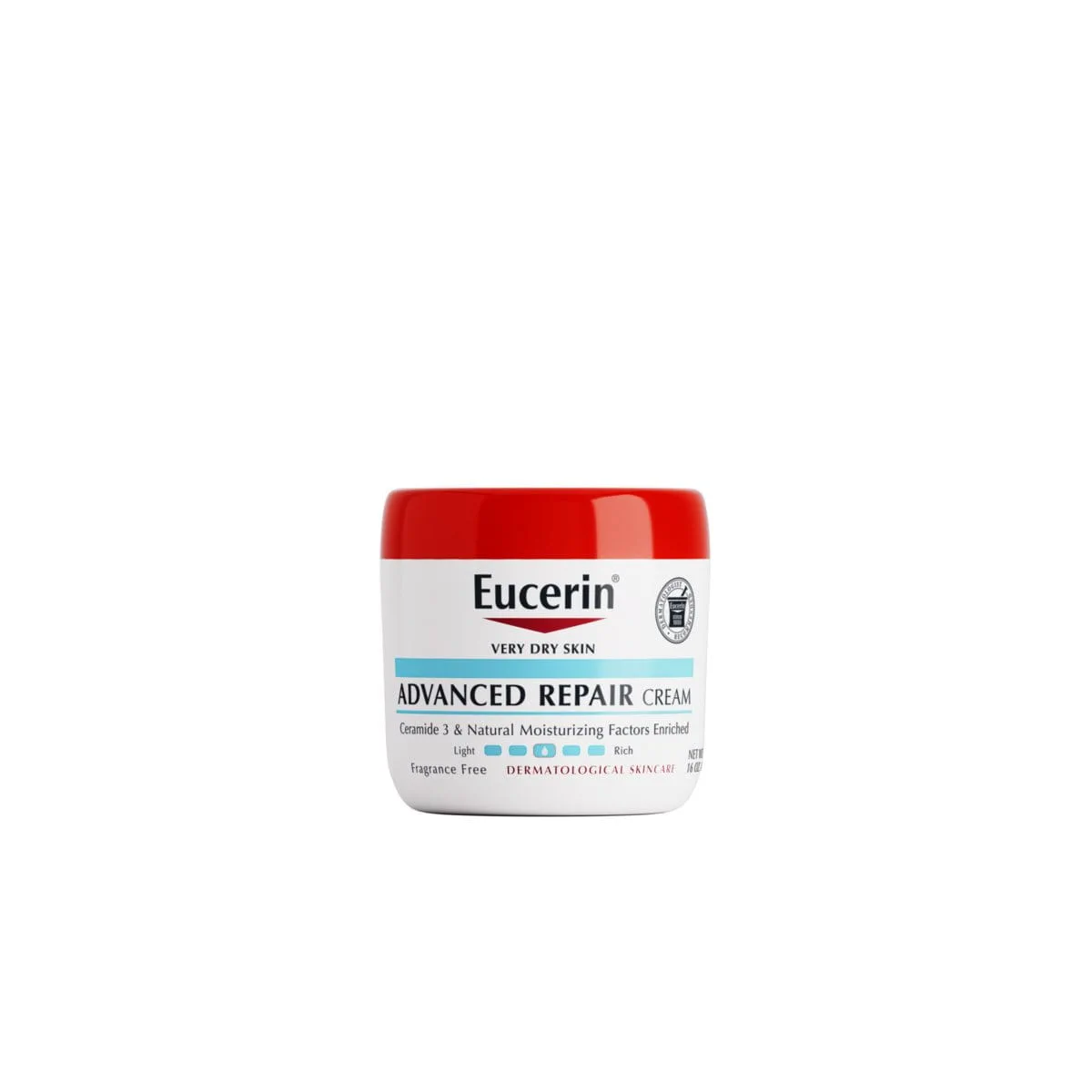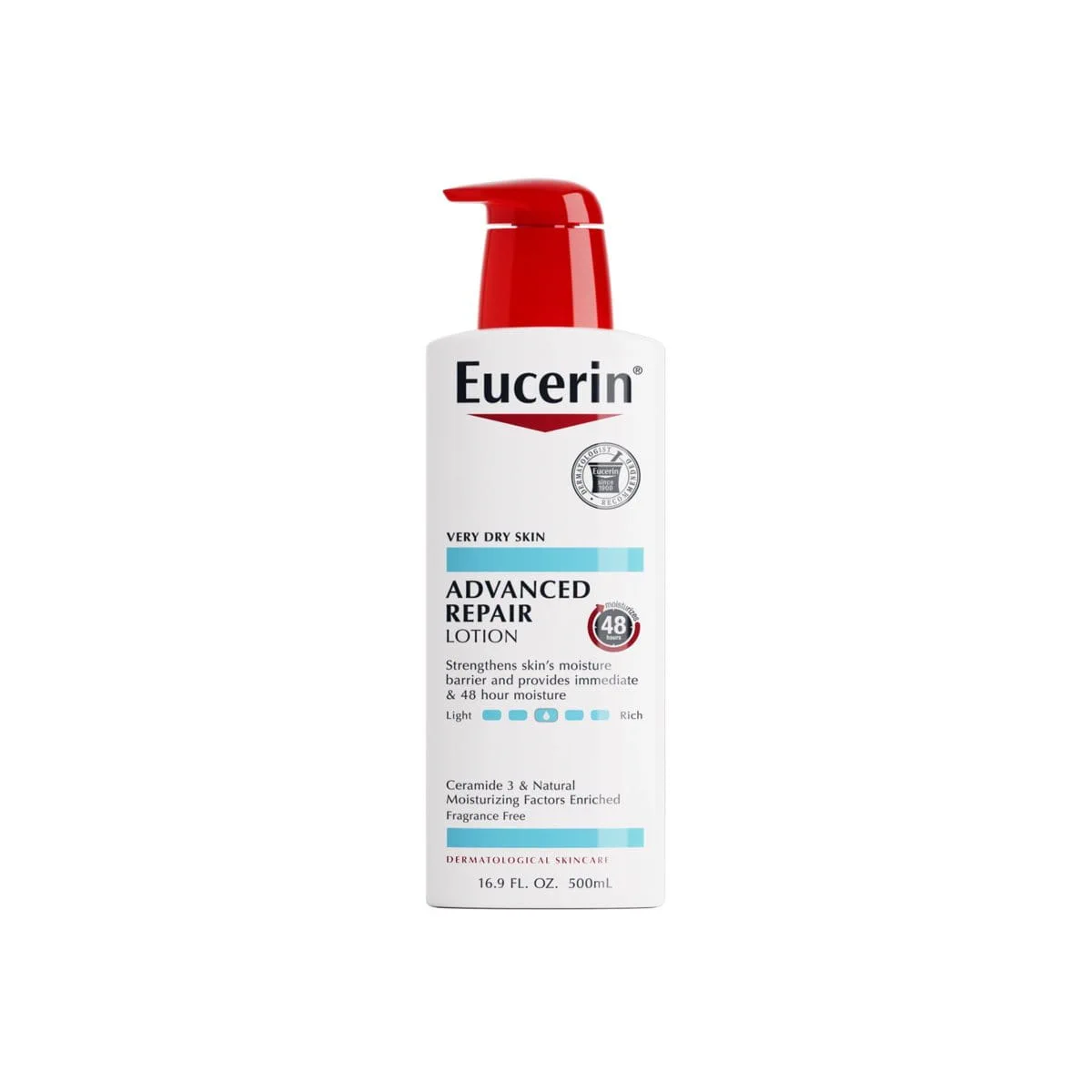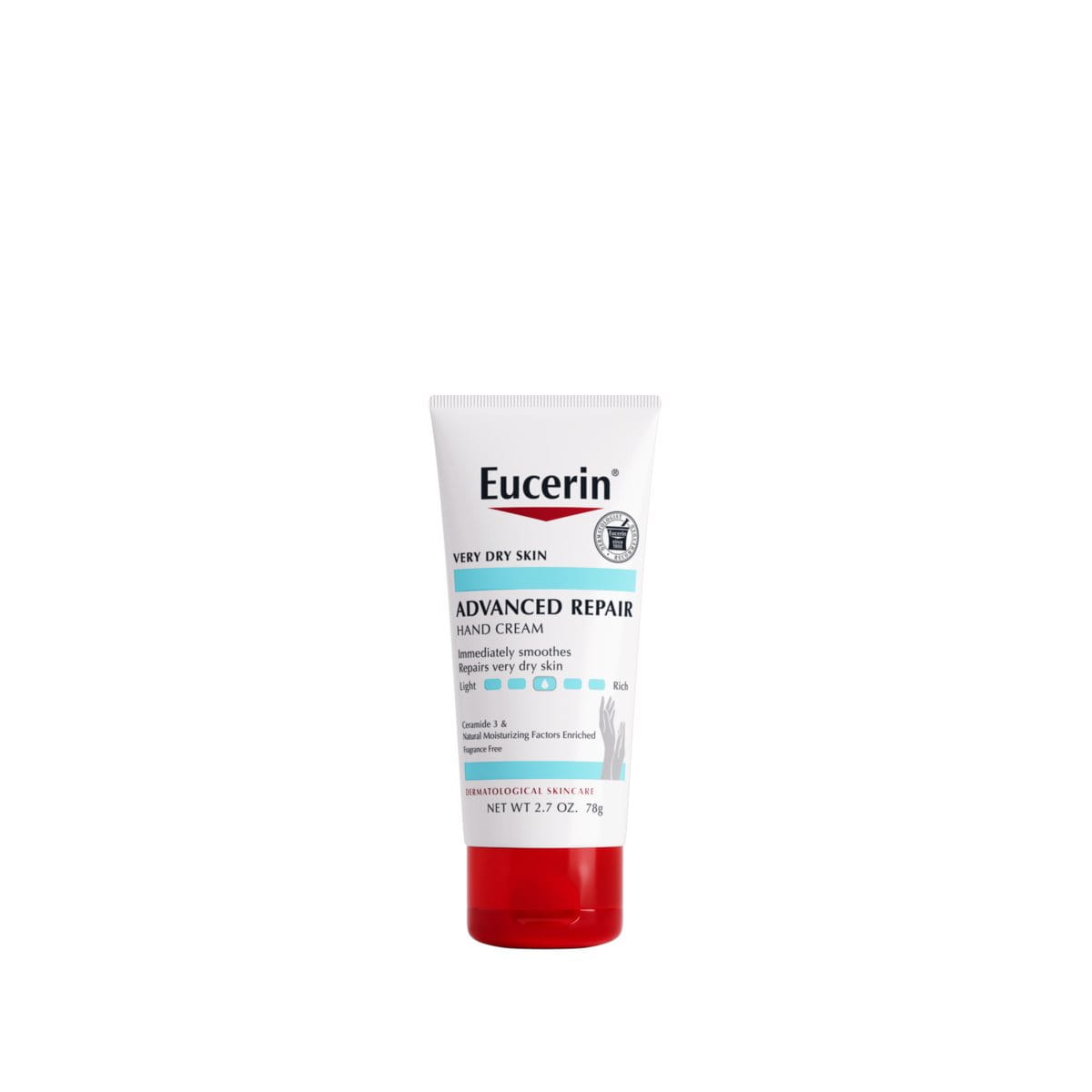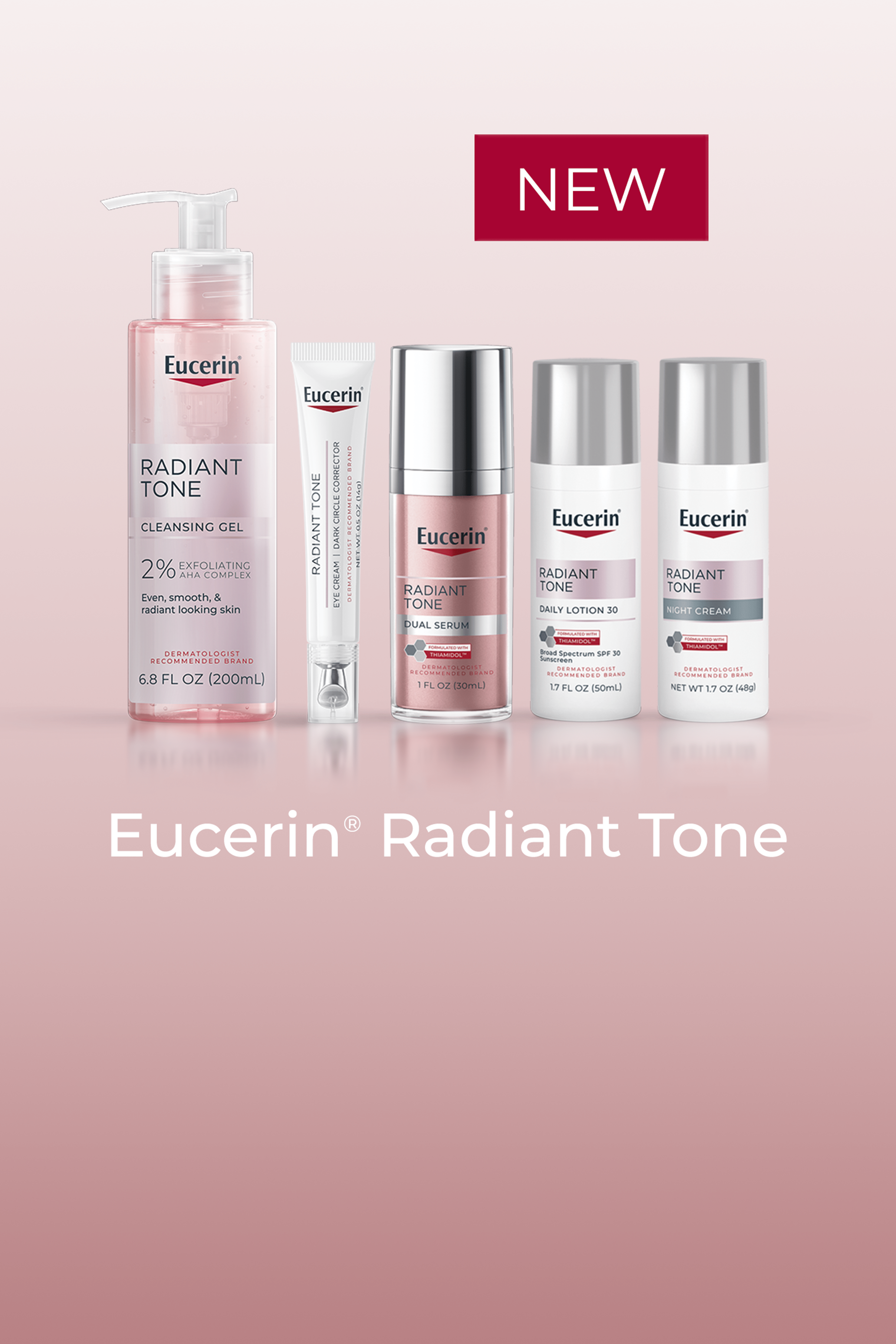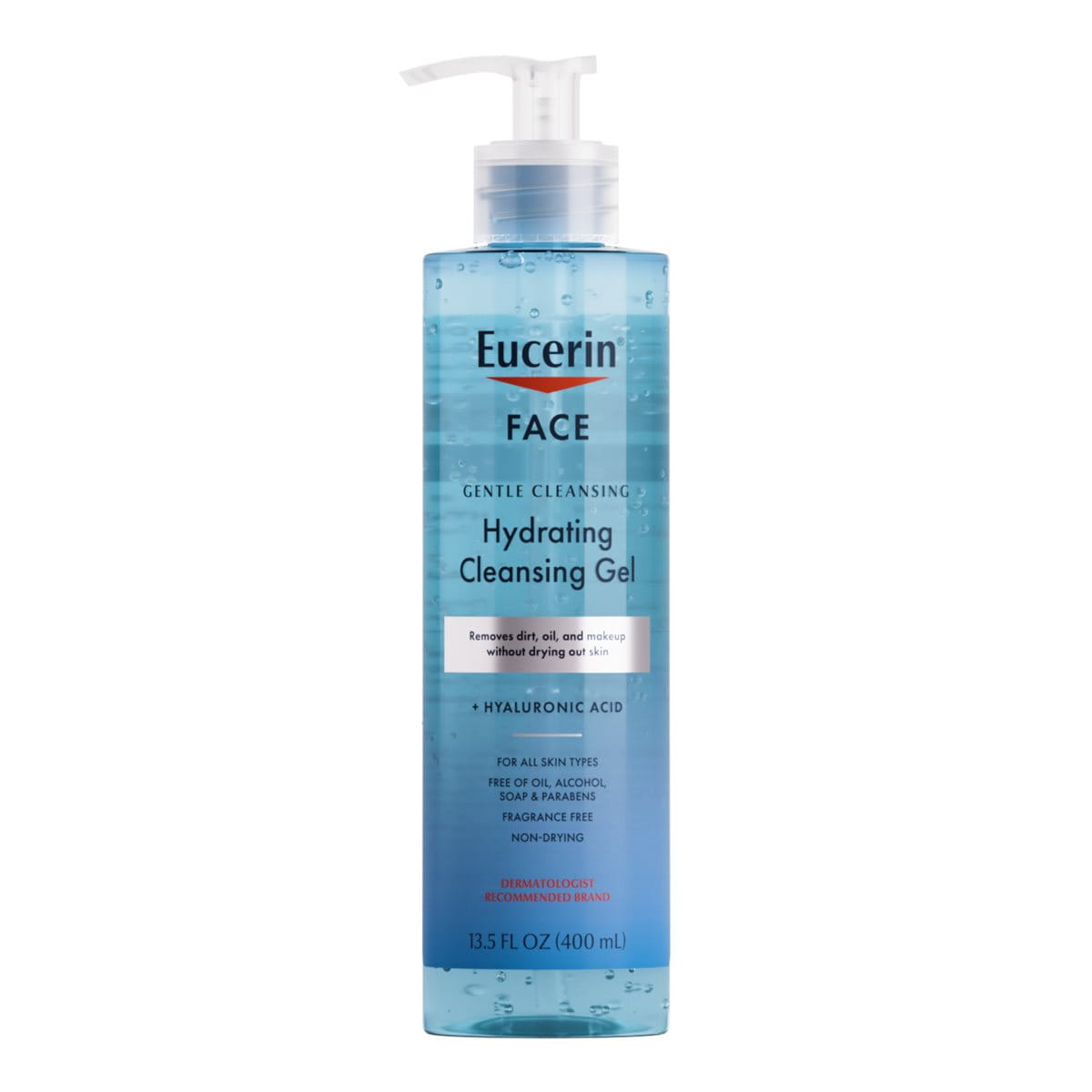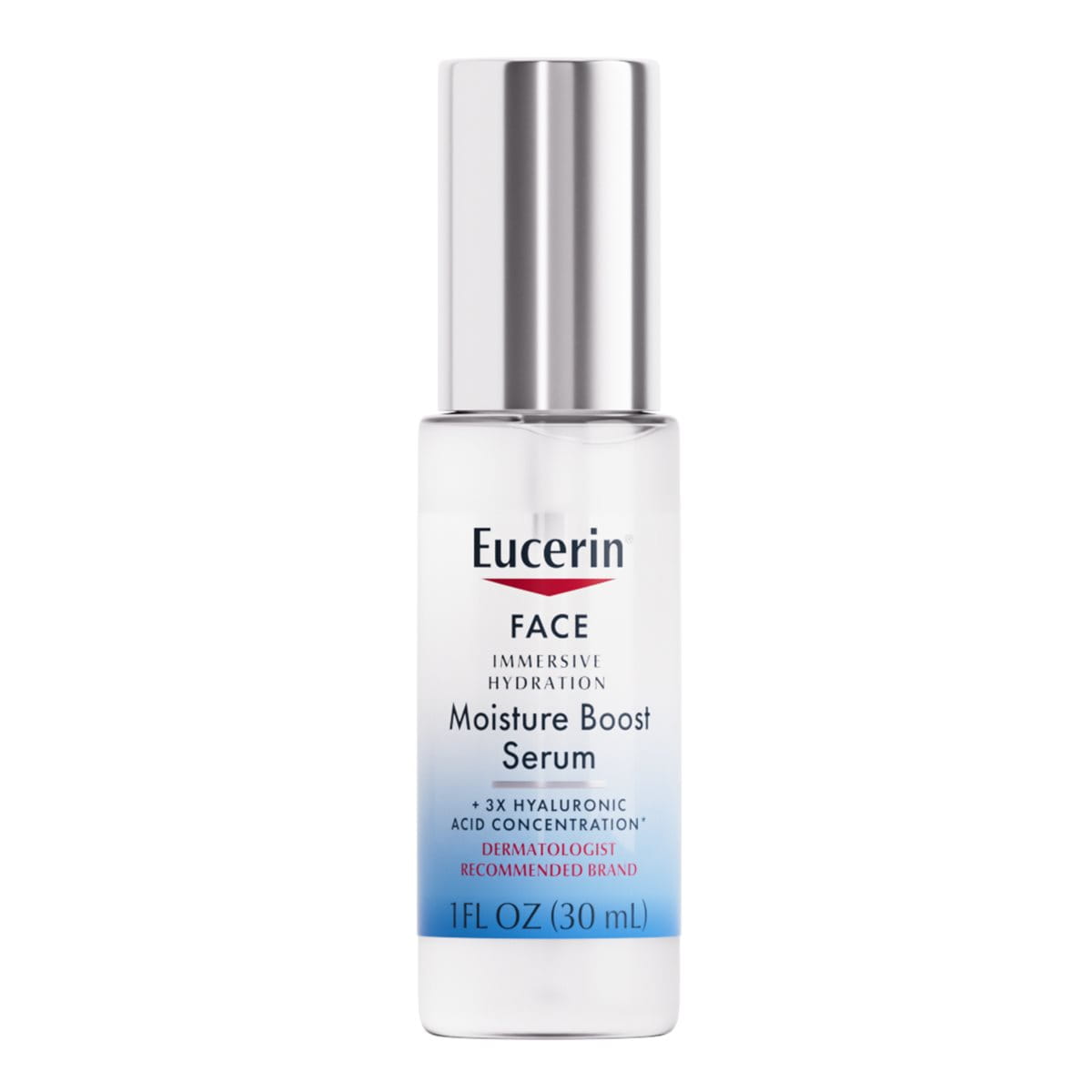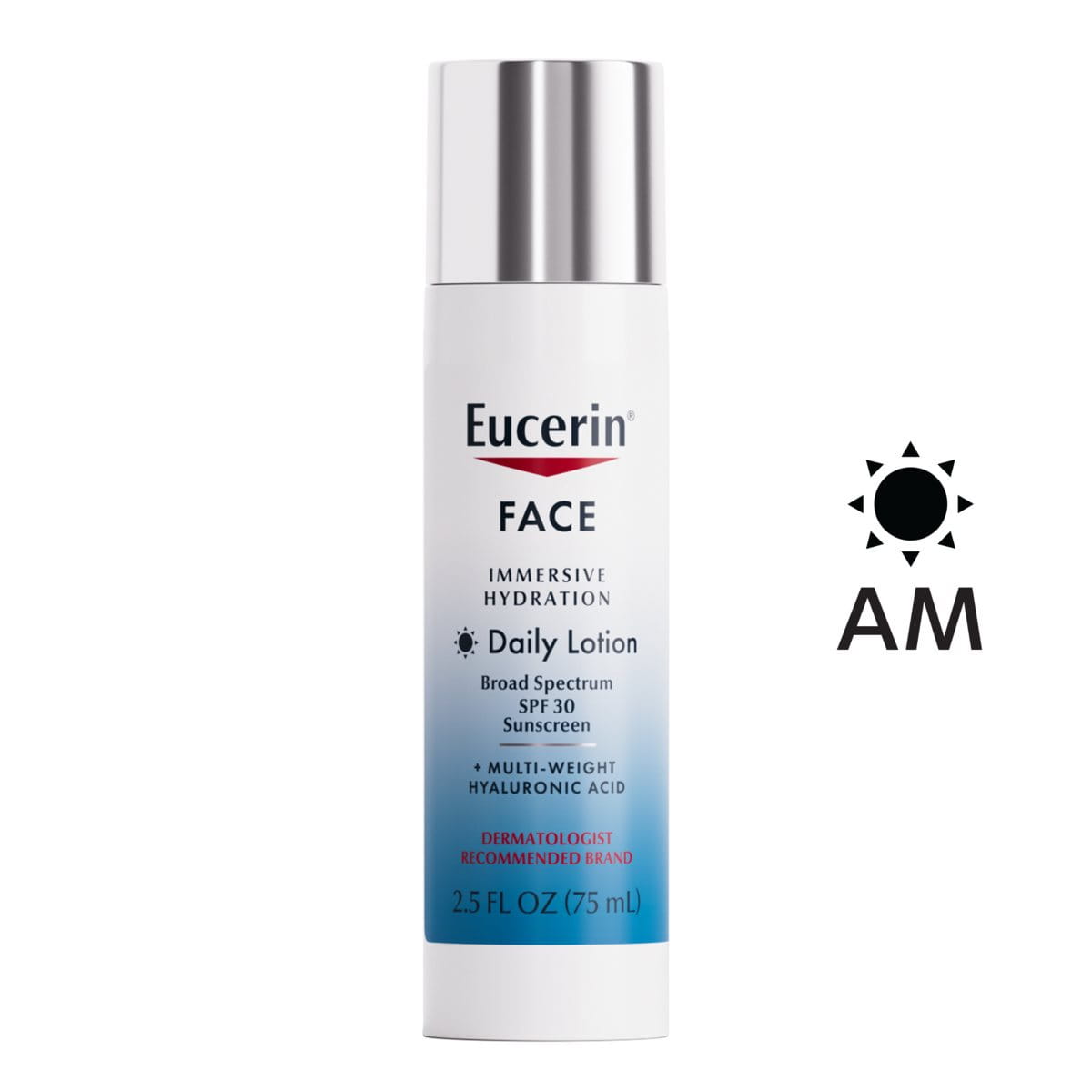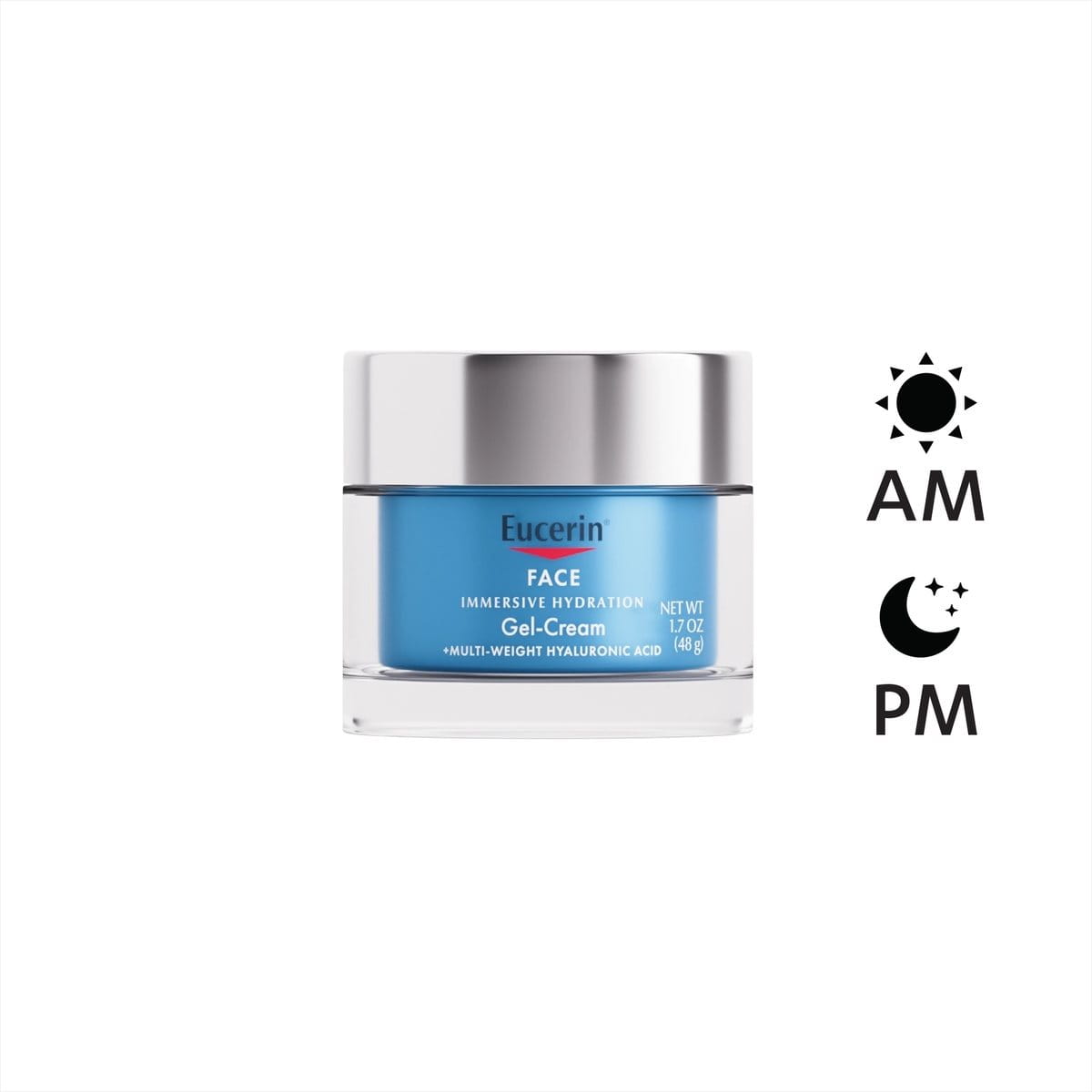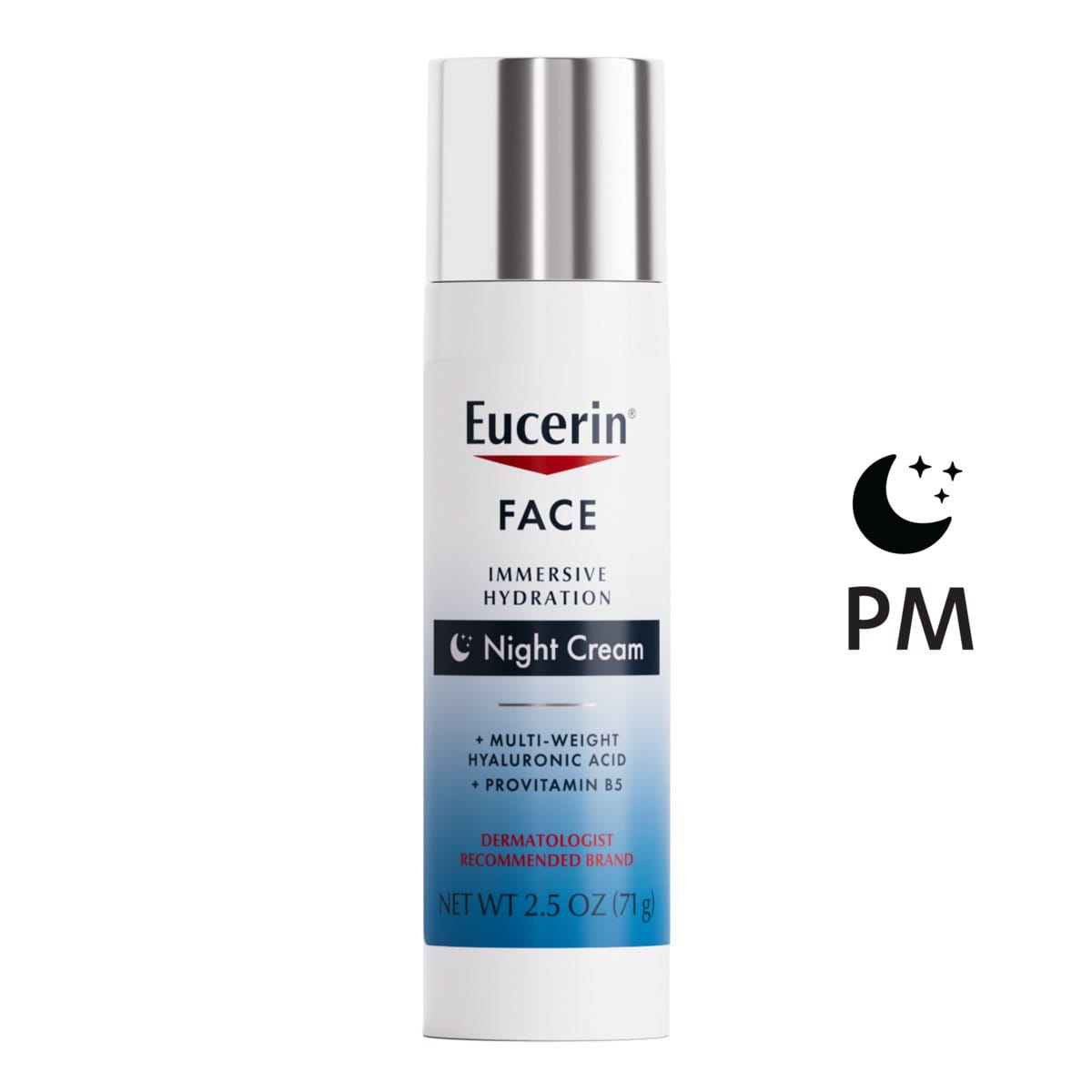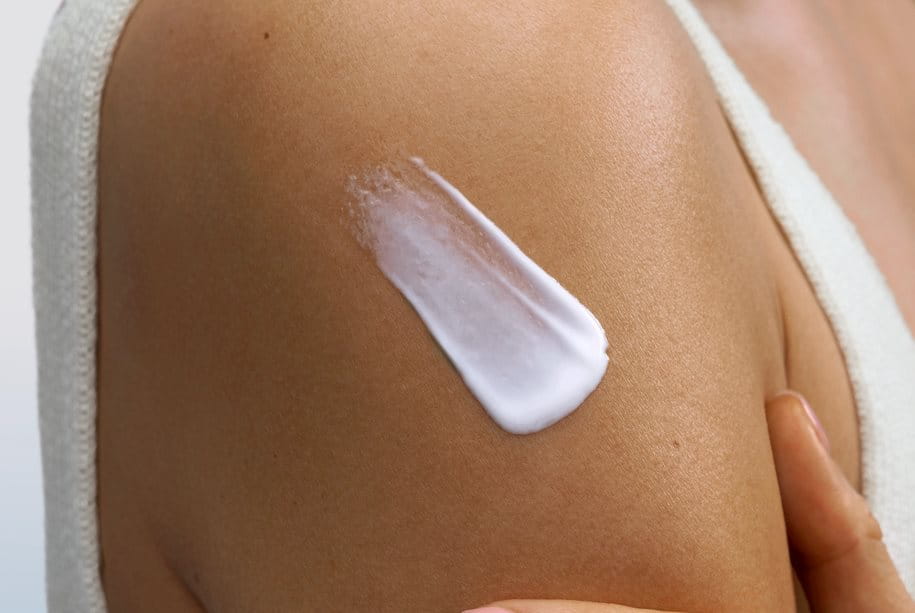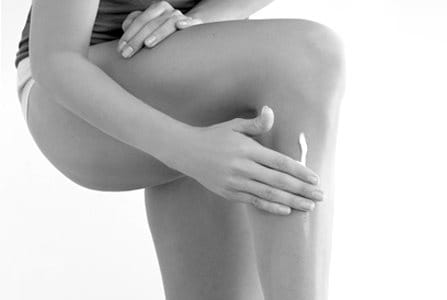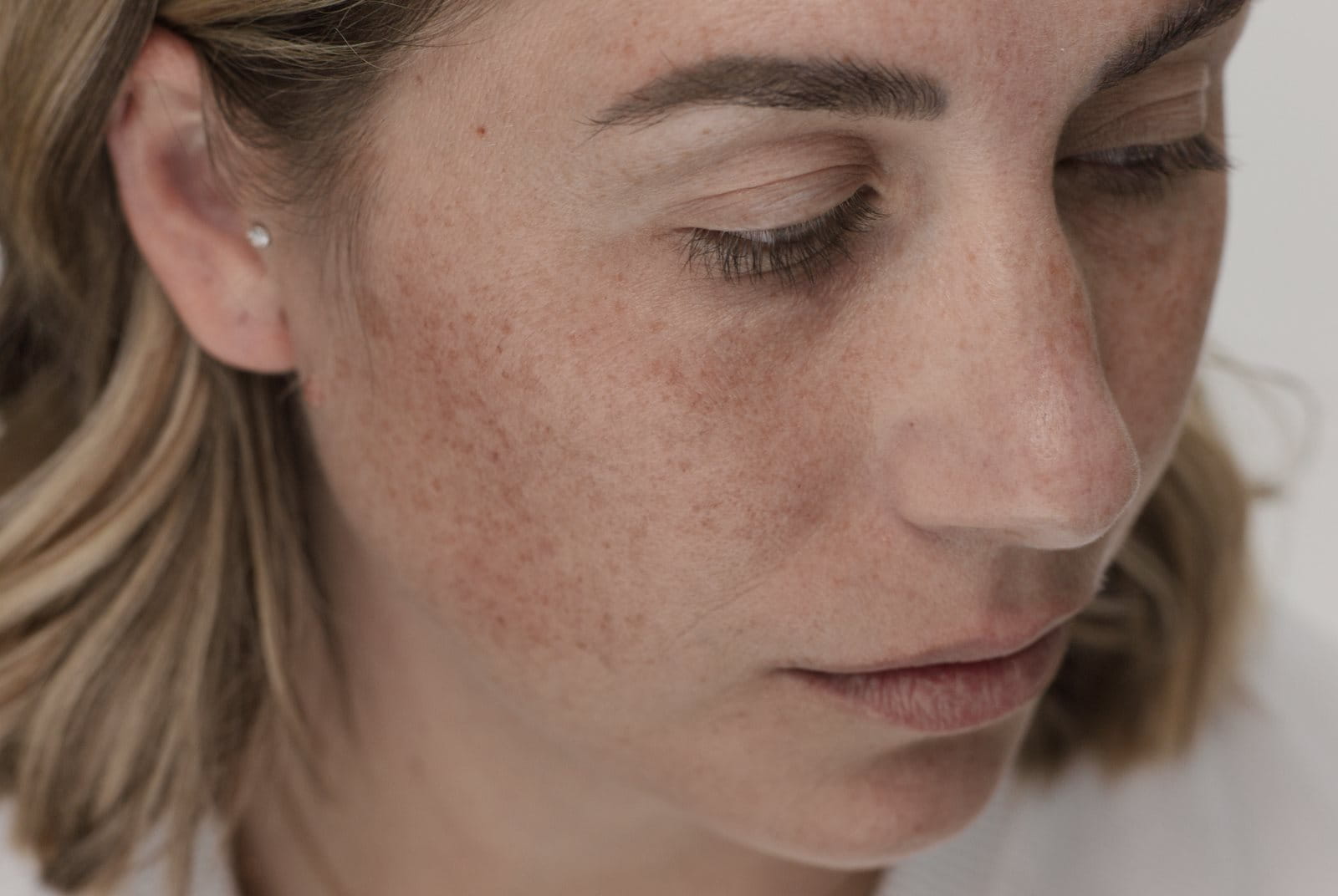If you've noticed your skin feeling more sensitive or itchy than usual, it may be dehydrated. All skin types, not just dry skin, can become dehydrated during certain seasons or circumstances.
There is a lot of confusion that dehydrated skin can only occur if you have dry skin. Here we share our recommended routine for how to hydrate your skin.
Dehydrated skin vs dry skin
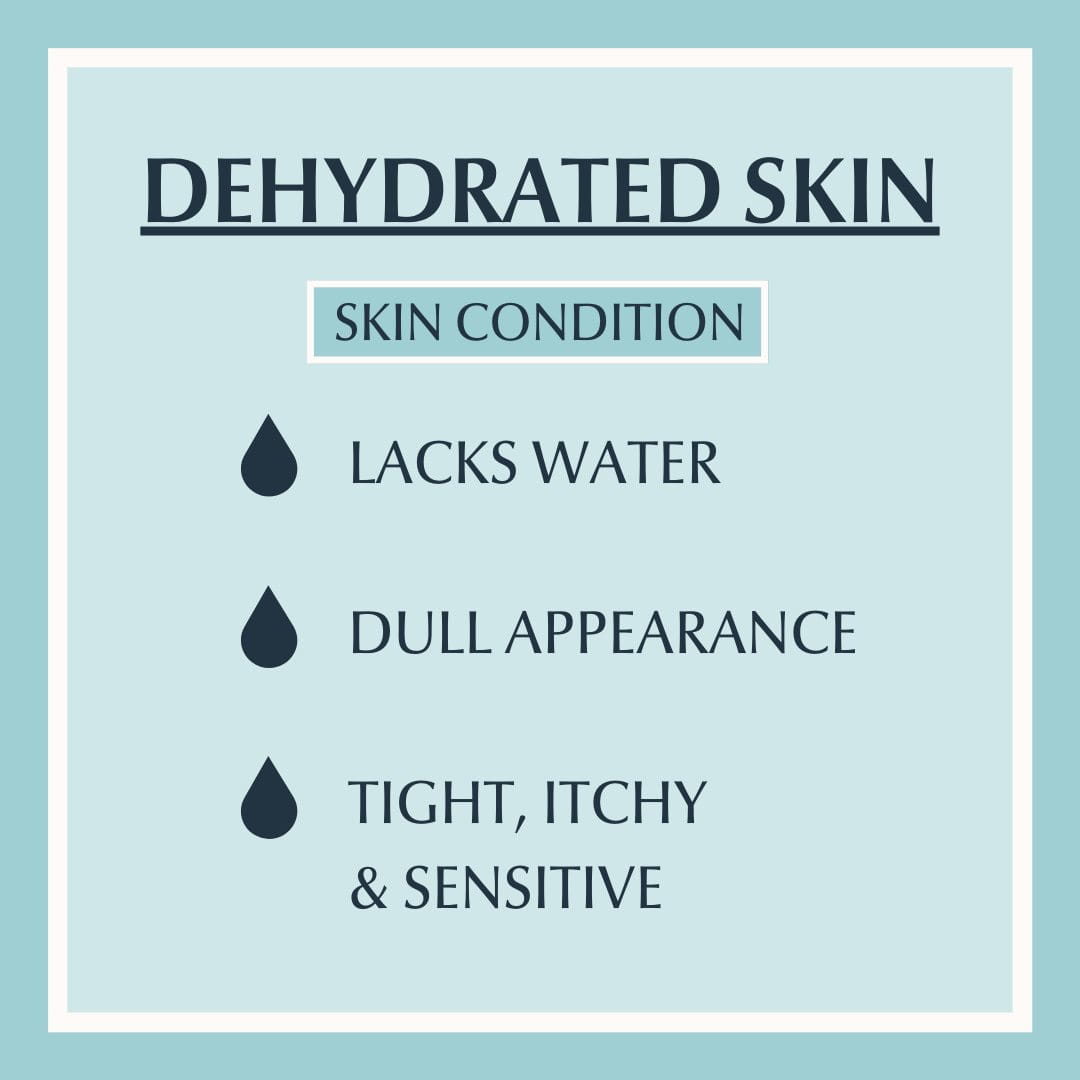
Dry skin is a skin type, but dehydrated skin is a temporary condition requiring moisturization that can affect other skin types as well. Though signs of dehydrated skin are similar to those of dry skin, even oily skin types can become dehydrated.
Dry skin is a skin type and is typically easy to recognize:
- Lacks sebum (oil)
- Rough & flaky
- Scaly skin
- Skin feels dry all year long
Here are the signs of dehydrated skin to look out for:
- Lacks water
- Dull appearance
- Tight, itchy and sensitive
- Lack of radiance and comfort
- Increased appearance of fine lines and wrinkles
- Darker circles under eyes
Speak to a dermatologist if you're unsure whether your skin is dehydrated or dry.
What causes dehydrated skin?

Dehydrated skin is a condition caused by insufficient water content. External factors including the weather, an unhealthy diet and lifestyle choices like smoking or alcohol consumption all deplete the water in your skin.
This lack of moisture disturbs the skin's moisture barrier, meaning it is less able to protect itself against bacteria and other external irritants. This is also caused by using skincare products that contain harsh ingredients or are unsuitable for your skin, leading to an imbalance. Learn more about dry skin:
How to hydrate facial skin
As a first step to treat dehydrated skin, reassess your skincare routine. The day-to-night Eucerin Immersive Hydration range will leave your skin feeling fresh and hydrated. All products in the range are suitable for sensitive skin, and have been formulated with two sizes of Hyaluronic Acid. With macro-sized molecules, it intensively hydrates the skin’s surface, while with 40x smaller* micro molecules, it hydrates throughout the skin’s upper surface layers.
*40x smaller than macro hyaluronic acid molecules also in formula.
AM face routine to hydrate your skin
Step 1. Cleanse
Cleanse your face with our Hydrating Cleansing Gel. This cleanser is gentle on the skin while removing any build-up that may have formed overnight and preparing your skin for the rest of your skincare routine. It is free of oil, alcohol, soap and parabens, making it suitable for all skin types, even sensitive skin.
Step 2. Serum
Massage Immersive Hydration Moisture Boost Serum into your face and neck to leave dehydrated skin feeling fresh and hydrated. The ultra-lightweight formula absorbs quickly and can be used morning and night.
Step 3. SPF
Follow up with moisturizer. There are two in the range suitable for your morning routine, and each has its benefits. For a moisturizer with SPF, we recommend Immersive Hydration Daily Lotion Broad Spectrum SPF 30. It provides intense, smoothing hydration that lasts all day as well as sunscreen protection from sun damage.
We also recommend Immersive Hydration Gel-Cream, which deeply hydrates throughout skin’s surface layers for up to 72 hours. It can be used morning and night, however, it does not have SPF so it should be used in conjunction with sun protection during the day.
PM face routine to hydrate your skin
Step 1. Cleanse
Cleanse your face with the Hydrating Cleansing Gel to gently remove oil, dirt, makeup or anything else that has accumulated during the day.
Step 2. Serum
Next, massage Immersive Hydration Moisture Boost Serum into your face and neck to allow the product to work throughout the night. This lightweight serum visibly reduces the appearance of fine lines and wrinkles with regular use.
Step 3. Moisturize
Hydrate your skin with the Immersive Hydration Night Cream which has been specially formulated to restore the skin’s moisture through the night. This moisturizer is non-comedogenic, meaning it will not clog your pores while you sleep.
Lifestyle tips to hydrate your skin
Though the symptoms of dehydrated skin can be frustrating, you can hydrate your skin by rethinking your skincare routine and making some lifestyle changes.
- Moisturize: Ensure you apply a moisturizer as part of your morning and evening skincare routine.
- Avoid harsh cleansers: It's important to choose skincare products that don't strip away natural skin lipids, like the Eucerin Gentle Cleansing range.
- Reduce bathing times: Try not to shower for longer than 10 minutes, and limit bathing to once a day using warm (not extremely hot) water. Pat skin dry instead of rubbing, so skin stays damp as you apply your moisturizer.
- Wear sunscreen daily: Even in colder months the sun’s UV rays can damage the skin barrier, which can lead to dehydrated skin.
- Stay hydrated: As a first step, ensure you drink enough water each day, unless your doctor says otherwise. According to Harvard Medical School, men should have a total daily water intake of about 124 oz (15.5 cups), while women need about 92 oz (11.5 cups). This may work out to only needing to drink 32-48 oz (4-6 cups) of plain water, as ‘total water intake’ refers to water from all fluid sources including coffee, tea, juice, fruits, and vegetables. Be sure to replenish lost fluids during and after exercising.
- Exfoliate: Removing the build-up of dead skin cells is key to treating dehydrated and dry skin, as it helps remove dead skin cells meaning moisturizers absorb better. Depending on your skin type, you should exfoliate at least once a week.
- Avoid dry air indoors: Air conditioned or overheated rooms accelerate moisture evaporation.
- Review your makeup choice: Consider using makeup that uses moisture-attracting ingredients like glycerin and hyaluronic acid.
- Maintain a balanced diet: Drink less caffeine and alcohol and eat a balanced diet.
- Stop smoking: Our skin becomes drier and more susceptible to fine lines due to the toxins in cigarettes.
If you notice your skin doesn't improve after making these changes, then you may in fact have a dry skin type. Speak to your dermatologist for further advice.
The information provided herein is not intended to be medical advice. Nor is it intended to treat the underlying skin disease or condition. The information is provided solely to:
1. Moisturize, soften and smooth dry skin
2. Improve the appearance of the skin
3. Achieve healthier-looking skin
Our brand values

We deliver a holistic approach to help keep your skin healthy-looking and radiant.

For over 100 years, we have dedicated ourselves to researching and innovating in the field of skin science. We believe in creating active ingredients and soothing formulas with high tolerability that work to help you live your life better each day.

We work together with leading dermatologist and pharmacist partners around the world to create innovative and effective skincare products they can trust and recommend.
